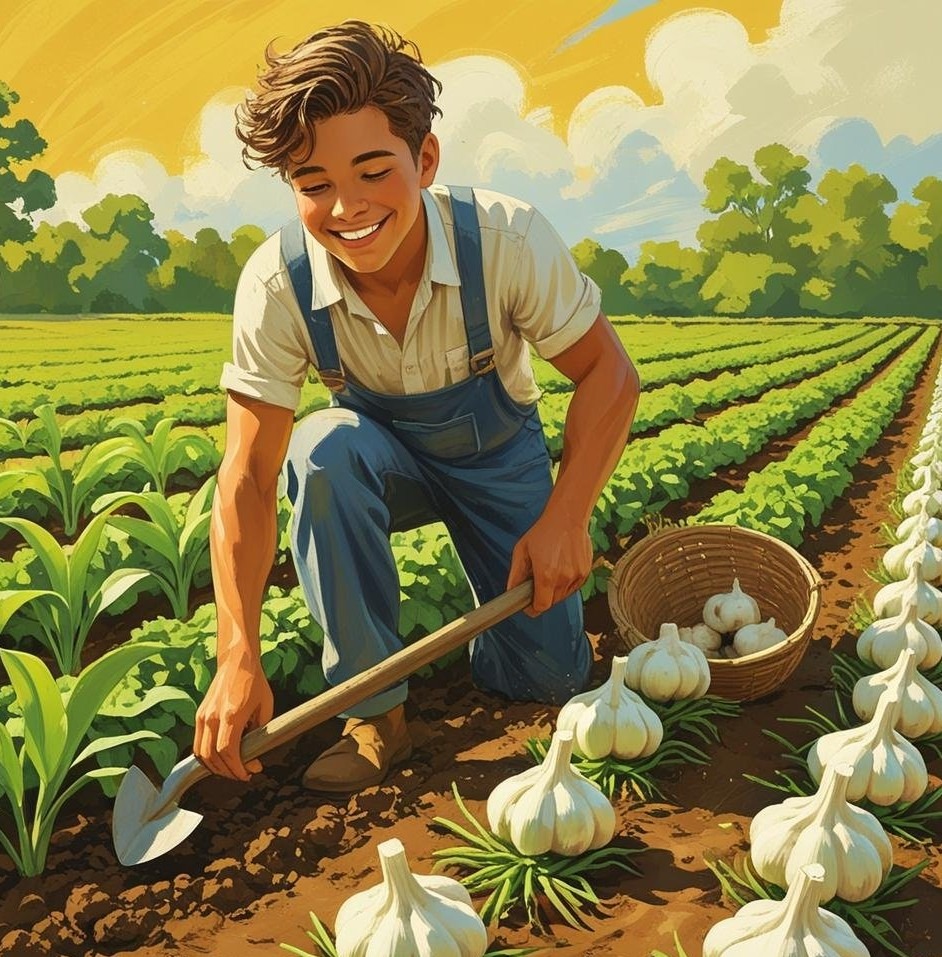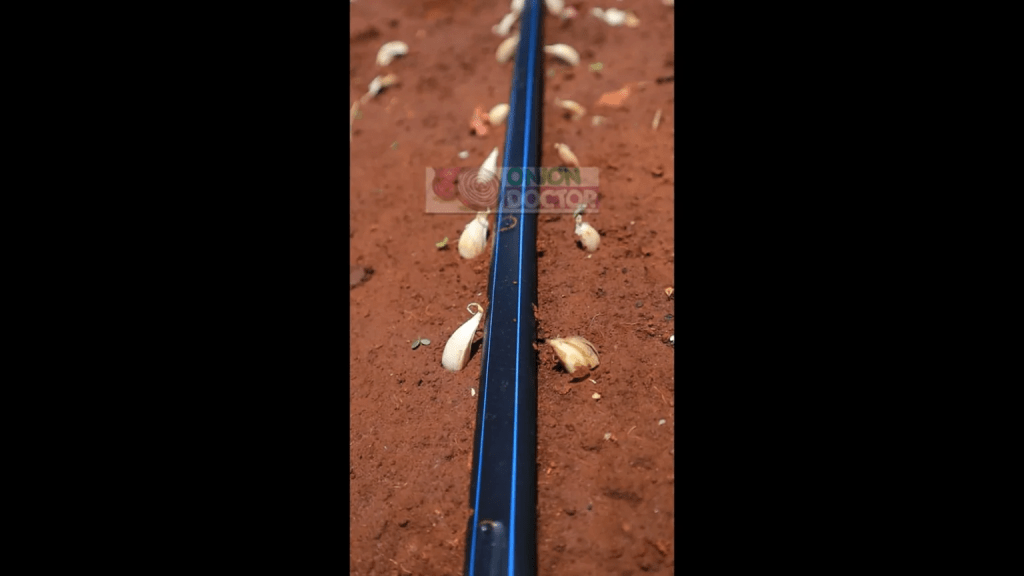Hey, Gen Z! Tired of the 8-to-5 office grind, endless Zoom calls, and the same old desk life? Imagine swapping your laptop for a spade, your cubicle for open fields, and your coffee runs for the sweet, pungent aroma of fresh garlic. Welcome to the world of garlic farming in Kenya—a vibe that’s not just lucrative but also lit! With the Onion Doctor leading the way, let’s dive into why ditching the office for the shamba is the ultimate Gen Z flex.

WHY GARLIC FARMING IS THE GEN Z DREAM:
Garlic farming isn’t just about growing a crop; it’s about growing your future. Here’s why Gen Z in Kenya is turning to the shamba for a life that’s more fulfilling than any office job:
- Be Your Own Boss: No micromanaging supervisors or stuffy corporate rules. On the shamba, you call the shots. Want to blast your favorite Afrobeat playlist while planting? Go for it!
- Bank Big Vibes: Garlic is a high-value crop with insane returns. One acre can yield 3-6 tonnes, fetching KSh 150-400 per kilo depending on the season. That’s a potential income of KSh 450,000 to 900,000 per acre! Talk about stacking paper while staying sustainable.
- Eco-Friendly Flex: Gen Z is all about sustainability, and 92.98% of you care about the planet. Garlic farming lets you work with nature, using organic methods to keep soils fertile and reduce imports. Less carbon footprint, more green cred
- Quick Wins: Garlic matures in just 4-5 months, meaning you can see profits faster than waiting for that office promotion. Multiple harvests a year keep the cash flow steady.
- Global Glow-Up: Kenya’s garlic is in demand locally and internationally (Europe, Middle East, Asia). You’re not just farming—you’re building a brand that could go global.
- Health and Hype: Garlic’s got mad health benefits—detox, immunity boost, and even cancer prevention vibes. It’s a crop that’s good for your wallet and your wellness brand.

OFFICE LIFE VS SHAMBA LIFE
Let’s break it down. The office job might seem stable, but it’s a trap for Gen Z’s free spirit. Here’s how garlic farming smokes the corporate life:
| Office Job | Shamba Life |
| Tiresome 8 to 5,Monotonous | Freedom to work outdoors, fresh air, and sunshine. |
| Endless emails and meetings | Planting, harvesting, and chilling with nature. |
| Fighting for Ksh 5000 raise | Earning Ksh 450,000 per acre. |
| Dress code: suits and stress | Dress code: gumboots and good vibes. |
| Unemployment risk (66.71% of Gen Z are jobless) | Creating your own job and legacy |
STEP TO STEP GUIDE ON GARLIC FARMING IN KENYA
STEP 1: CHOOSING THE RIGHT GARLIC VARIETY
Garlic comes in two main types: softneck and hardneck. Each has unique characteristics, so pick the one that suits your Kenyan climate and culinary needs.
- Softneck Garlic:
- Best for warmer Kenyan regions like Mombasa.
- Stores longer( up to 9 months)
- Popular varieties: California Early.
- Hardneck Varieties:
- Thrives in cooler Kenyan Highlands like Nyeri or Eldoret.
- Produces fewer larger cloves.
- Bolder, complex flavors.
- Popular varieties: Rocamble.
2. WHEN AND WHERE TO PLANT
Timing: For garlic farming in Kenya, plant in the cooler, dry season to allow roots to establish.
Location:
- Sunlight: Choose a spot with full sun (6-8 hours daily), perfect for Kenyan farmers.
- Soil: Garlic loves well-drained, fertile soil with a pH of 6.0-7.0. Add compost or aged manure widely available in Kenya to enrich the soil.
- Space: Ensure good air circulation to prevent fungal issues, common in humid Kenyan regions.
STEP 3: PREPARING AND PLANTING GARLIC CLOVES
Here is where the fun of garlic farming in Kenya begins! Follow these steps to plant your garlic:
- Break the Bulb: Gently separate the garlic bulb into individual cloves, keeping the papery skin intact. Choose the largest, healthiest cloves for planting.
- Plant Properly: Place each clove pointy-end up, 2 inches deep and4-6 inches apart in rows spaced 12 inches apart.
- Cover and Mulch: Cover with soil and add mulch to protect cloves during the cooler seasons

STEP 4: CARING FOR YOUR GARLIC CROP
Garlic is low-maintenance, perfect for garlic farming in Kenya, but a little care ensure a bumper harvest:
- Watering: Keep soil consistently moist but not waterlogged( about 1 inch of water per week), especially during Kenya`s dry seasons.
- Weeding: Remove weeds to prevent competition, a key step for Kenyan farmers.
- Fertilizing: Apply a balanced fertilizer in the growing season when shoots emerge.
STEP 5: HARVESTING AND STORING YOUR GARLIC
Harvest in December to February when the lower 2-3 leaves turn brown but upper leaves are still green. Dig carefully to avoid damaging bulbs.
- Curing: Hang bulbs in a dry, air spot for 2-4 weeks to cure, a common practice in garlic farming in Kenya. Trim roots and stems once fully dried.
- Storage: For Softneck: Store in a cool, dry place for up to 9 months. For Hardneck: Stores for 3-6 months in similar conditions.

Onion Doctor Tip: Save your best bulbs for replanting next season to Keep your garlic farming in Kenya cycle going!
Contact us for: Onion seedlings, Garlic seedlings, Germinated garlic cloves, Farm planning services, Soil testing, training on onion and garlic growing, Drip irrigation installation and maintenance, Agronomic support, Onion and Garlic value pack and Farm management. For free consultation, placing orders or booking a visit with an agronomist, please contact us via Call or what’s app +254703982228, Email: Info@oniondoctor.co.ke. You can also check out our social media handles for daily updates on TikTok: https://www.tiktok.com/@oniondoctorke?_t=ZM-8wmsTu0qumO&_r=1 Instagram: https://www.instagram.com/oniondoctorke?igsh=MTVoaHF3aWUydTJzaQ==Facebook:https://www.facebook.com/share/16SwgYn2dG/ Youtube:https://youtube.com/@oniondoctorke?si=u5Jnd-r0qU9UDYqL and Twitter: https://x.com/OnionDoctorKe?t=FR3JXlS_oN1vjjUgAtfyzg&s=09